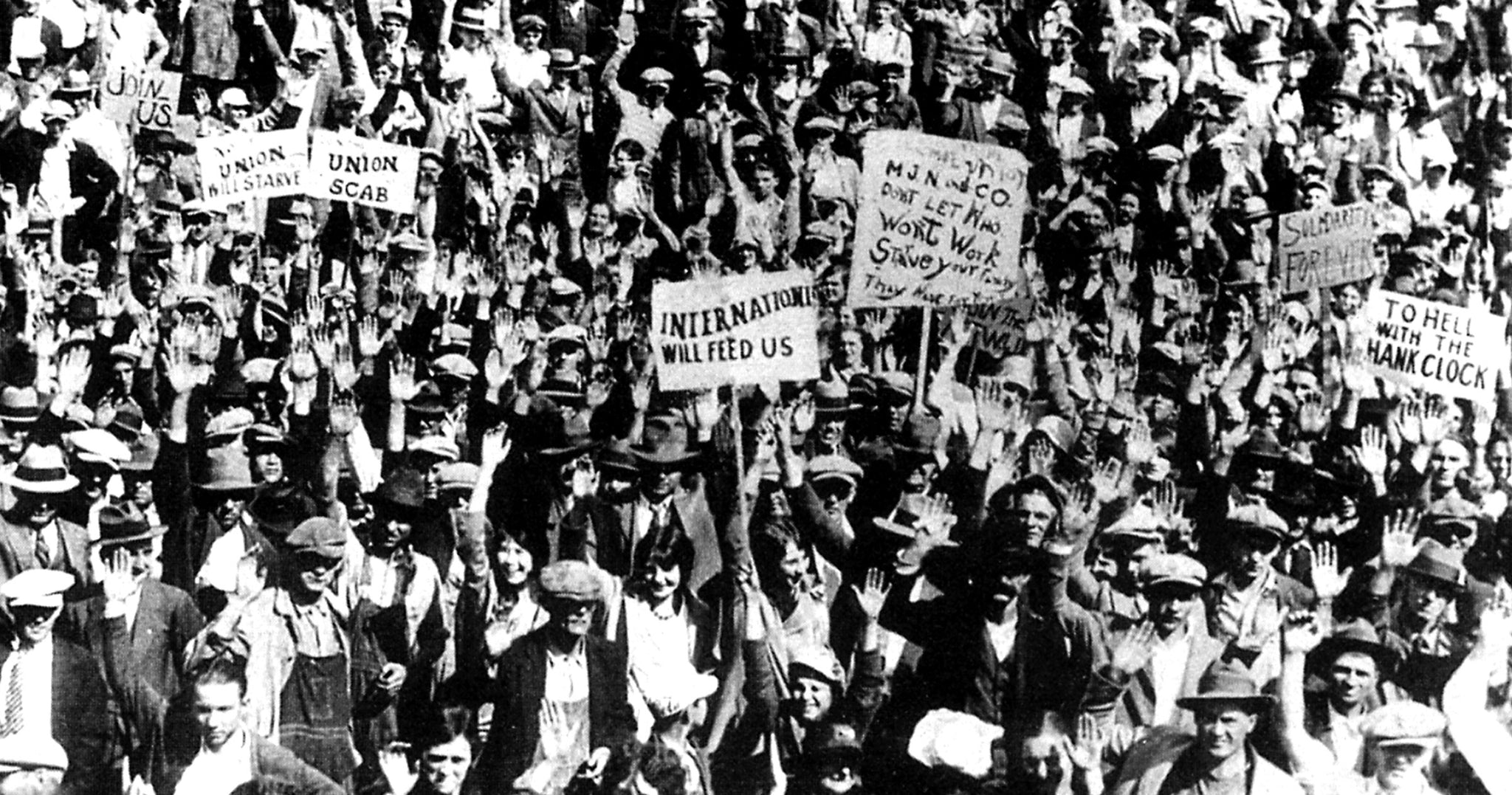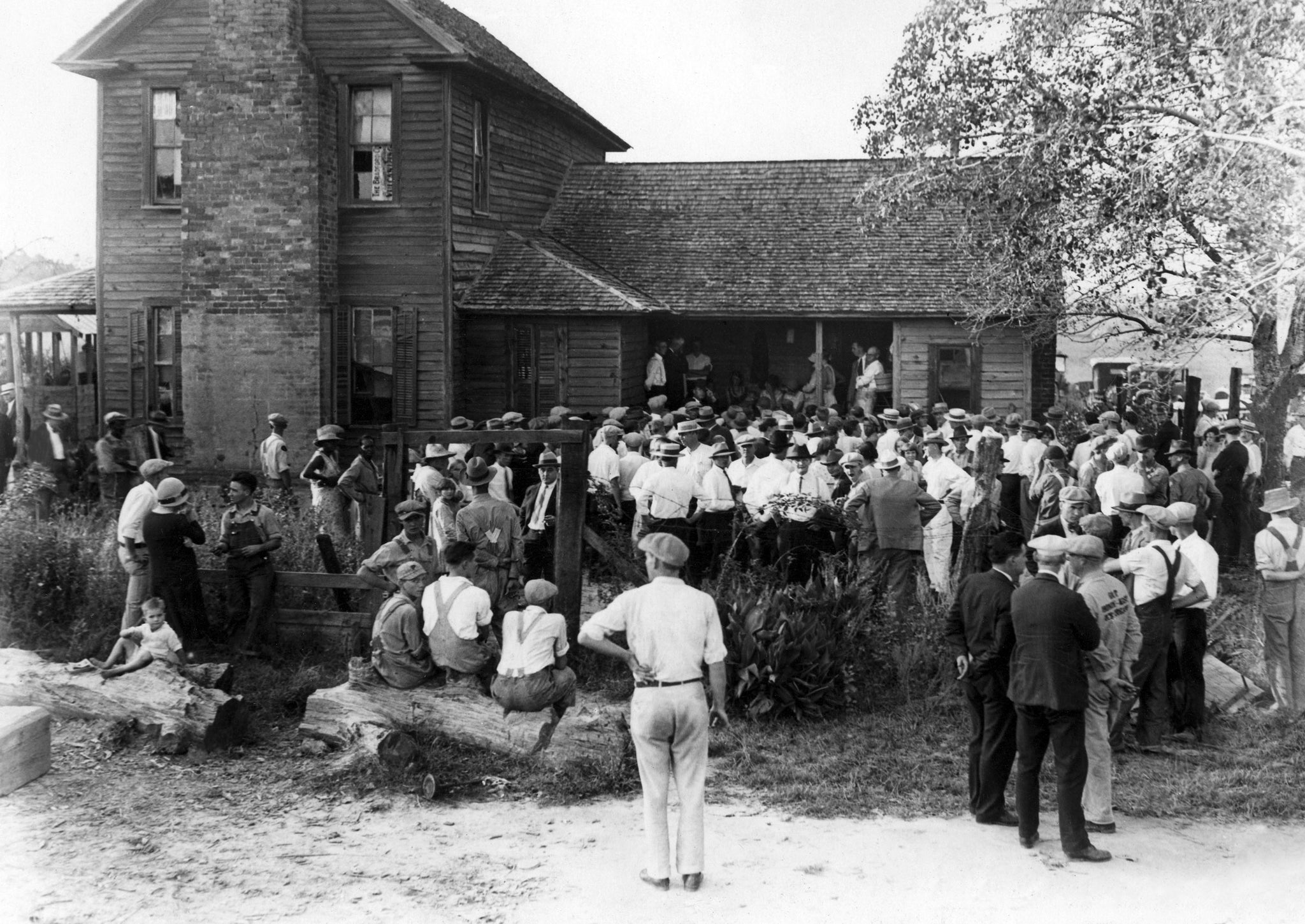
An estimated 1,000 strikers at Loray Mills, Gastonia, 1929.
Millican Pictorial History Museum
Ella May Wiggins Rallied Gaston County Textile Workers
On April 1st, 1929, nearly 2,000 workers from Loray Mill in Gastonia walked off the job to kick off one of the most controversial and impactful labor strikes in United States history. The movement in North Carolina gained momentum in part due to the work of Ella May Wiggins, and began to unravel after her tragic death.
Searching for a way to care for her large family, young mother and Tennessee native Ella May Wiggins made her way to the Carolinas and the textile mill industry in the 1920s. She worked as a spinner and bounced from mill to mill in search of better pay and conditions, but found that each situation was as dire as the last.
When the National Textile Workers Union began focusing its attention on the conditions in Gaston County, Wiggins got involved with the union as the Bessemer City branch's secretary and became a critical influencer for the movement.

Textile workers from Gaston County preparing to testify before Senate in 1929. Ella May Wiggins is the second woman from left.
Millican Pictorial History Museum
Wiggins was a mother of nine, four of whom died in early childhood, and was pregnant with another. Unable to provide proper nutrition and medicine to her growing family despite working twelve hours a day, six days a week, she was adopted as a symbol of the movement. She became renowned for her ballads that helped garner support and inspire workers to unionize.

The children of Ella May Wiggins, September 1929. From left: Albert, Myrtle, baby Charlotte, Millie, Clyde.
Millican Pictorial History Museum
Her best-known ballad, "The Mother's Lament," begins:
We leave our homes in the morning
We kiss our children good-bye
While we slave for the bosses
Our children scream and cry
And when we draw our money
Our grocery bills to pay
Not a cent to spend for clothing
Not a cent to lay away
It is for our little children
That seem to us so dear
But for us nor them, dear workers
The bosses do not care
The strike was tempestuous. Union supporters, anti-strike groups, and law enforcement violently clashed on a number of occasions. At the apex of the conflict, a merciless anti-strike force known as the "Committee of 100" attacked a truck full of union workers on the way to a rally, fatally shooting Wiggins.

A Bessemer City home where union activist and organizer Ella May Wiggins was laid after being fatally shot by a mob of anti-strike vigilantes known as the “Committee of 100” on September 14, 1929. She became known as “The Martyr of Loray Mills.”
Millican Pictorial History Museum
The movement lost its footing following the tragedy and conditions barely improved, but strikers' efforts were not completely in vain. In 1934, a massive strike encompassing the entire eastern United States was built on the foundation laid in Gaston County, making textile labor conditions a national issue.
But understand, all workers
Our union they do fear
Let’s stand together, workers
And have a union here
More dramatic photos of the strikes along with other dazzling shots of life in Gaston County can be found in the Gaston Gazette's new pictorial history book, Gaston County Memories: The Early Years. Click "More info" below for publication and ordering details.
Learn more about the 1929 strike in our video:

$44.95